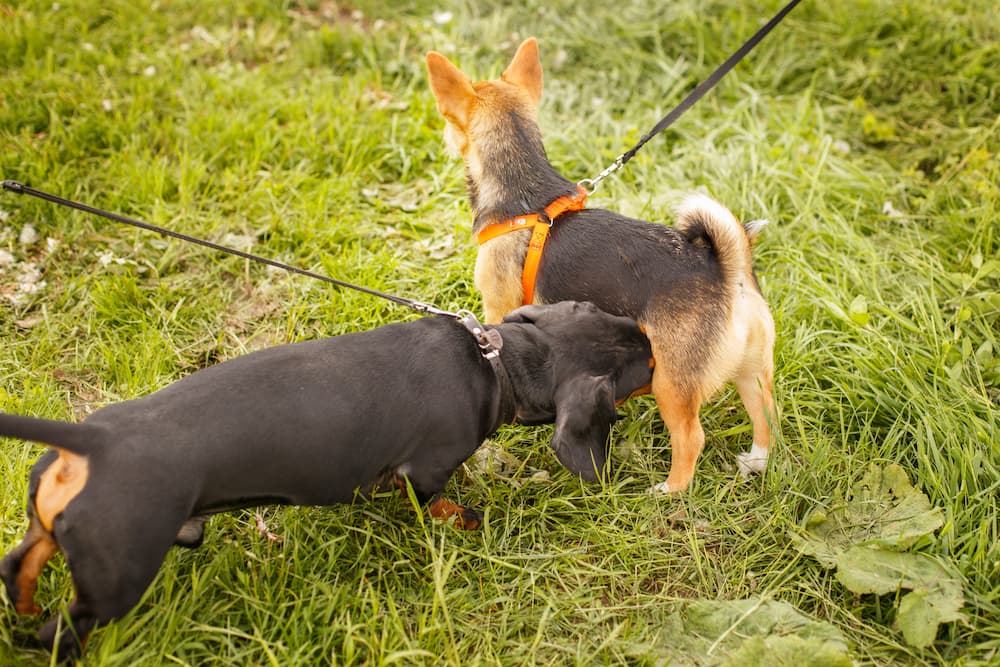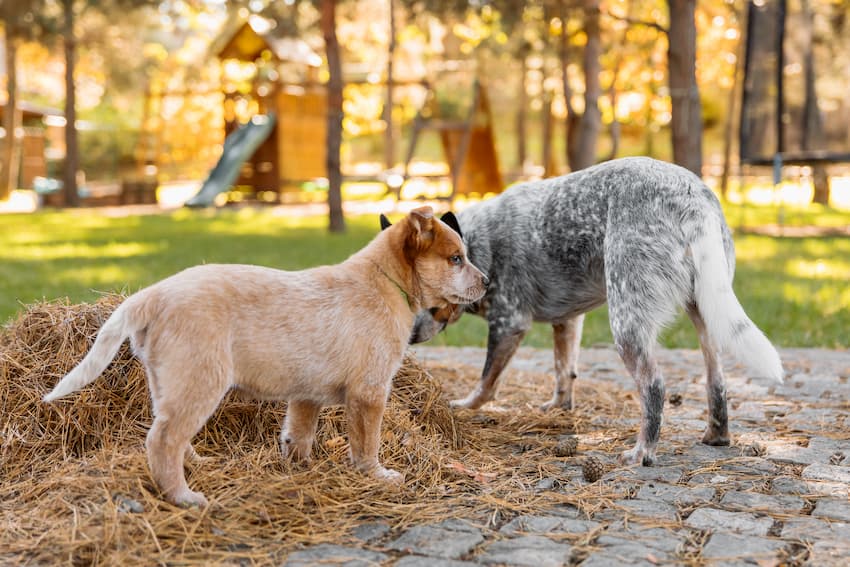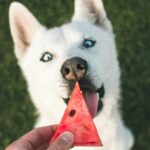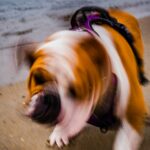Have you ever found yourself scratching your head in bewilderment while witnessing two dogs engaging in some, let’s say, unusual social behavior?
Namely that awkward moment when one dog is sniffing, licking or enthusiastically exploring another dog’s private parts, all while both parties seem perfectly content with this intimate encounter.
Now, unless you’re a certified dog whisperer or an experienced canine behaviorist, you might be wondering, “Why on Earth do dogs seem to be so fond of each other’s private areas?”
Read on to learn more about this strange piece of canine etiquette.
Why are Dogs so Curious about Other Dogs’ Private Areas?
Dogs are undeniably curious creatures, and one particular behavior that never fails to catch our attention is their fascination with sniffing each other’s private areas.
You’ve probably witnessed it at the park or during a playdate with other furry pals.
There are actually some good reasons behind this perplexing behavior:
1. Social Significance: Sniffing other dogs’ private areas is a crucial part of their social interaction.
Just as humans greet each other with handshakes or hugs, dogs have their unique way of simply saying hello.
Through this intimate sniffing ritual, dogs gather valuable information about one another, such as age, gender, and even emotional state.
It’s essentially their furry form of introduction and establishing a connection!
2. Scent Communication: Canines possess an incredible sense of smell, with over 220 million olfactory receptors compared to our mere 5 million.
When dogs sniff each other’s private areas, they’re detecting a myriad of scents that provide them with a wealth of information.
It’s like reading a diary! These scents can tell them if another dog is healthy, anxious, or even if they’ve recently munched on some delicious treats.
It’s a form of communication that humans can hardly comprehend.
3. Establishing Hierarchy: In the wild, canines rely on scent marking to establish territory and communicate with others.
By sniffing another dog’s private area, they are able to pick up on pheromones, which are chemicals released by the body that transmit important signals.
By exchanging these pheromones, dogs are determining who is the alpha in the group, essentially sniffing out the leader.
This instinctual behavior helps dogs establish social hierarchies, recognize pack members, prevent conflicts before they even arise, and even identify potential mates.
Understanding the Role of Scent in Dogs’ Social Interactions
But how exactly does the process of sniffing each other’s privates work?
As it turns out, there is a complex scientific answer to this question.
When dogs meet, whether they are familiar or meeting for the first time, they will often approach each other head-on.
This is when the sniffing begins! Dogs have scent glands located in their anal area, which emit a unique and complex odor.
These scents contain a wealth of information about the individual dog, including their gender, reproductive status, overall health and even social status.
By sniffing these private areas, dogs can gather vital information about the other dog and assess their compatibility for social interaction.
Additionally, dogs have a specialized organ called the vomeronasal organ, or Jacobson’s organ, located in the roof of their mouths.
This organ allows them to detect pheromones, which are chemical signals that play a crucial role in communication between animals.
When a dog sniffs another dog’s private areas, they are not only smelling the scent, but also picking up on these pheromones.
This additional information helps dogs determine a range of factors, including the other dog’s emotional state, whether they are ready to mate, and even if they are familiar with each other.
How to Manage your Dog’s Curiosity about Private Areas in Social Settings
While our dogs’ fascination with each other’s private areas may seem strange or even inappropriate to us, it’s important to remember that this behavior is entirely natural and instinctual for them. Just as humans shake hands to greet each other, dogs have their own unique way of saying hello and getting to know one another.
As responsible dog owners, we should respect their socialization needs and provide ample opportunities for them to interact with their fellow canines in a safe and controlled environment.
Here are a few tips to help you navigate these situations with grace:
- Supervise and redirect: Keep a close eye on your dog when they’re interacting with other canines.If you notice them getting a little too interested in another dog’s private area, gently redirect their attention to another activity, like playing fetch or practicing obedience commands.This will help them learn to focus on appropriate ways to interact.
- Socialize early and often: Expose your pup to a variety of dogs from a young age.This will help them become more comfortable and less fixated on sniffing private areas.Gradually increase the intensity of their socialization experiences, always ensuring that both dogs involved are comfortable and willing participants.
- Teach the “leave it” command: Teaching your dog a solid “leave it” command can be a game-changer in managing their curiosity.Start by practicing with lower distractions and gradually increase the difficulty level.This command will help you redirect their attention away from private areas and onto more appropriate behaviors.
- Redirect and distract: If your dog’s interest in other dogs’ private areas becomes excessive or uncomfortable, it’s important to redirect their attention to more appropriate behaviors.Teach them commands like “look” or engage them in a game of fetch when encountering other pups.By shifting their focus onto enjoyable activities, you can help minimize their preoccupation with private areas and channel their energy into more positive ventures.
Remember, dogs are curious creatures by nature, and their fascination with private areas is just one of the many quirks we have to embrace.
By understanding their motivations and implementing proper management techniques, you can ensure that your furry friend navigates social situations with grace and respect.
So, the next time your pup’s nose starts leading them astray, take a deep breath, redirect their attention, and appreciate their unique way of experiencing the world.
FAQ
Q: What exactly piques a dog’s interest in another dog’s private parts?
A: Well, it all comes down to communication, my friend.
Dogs communicate through a unique blend of scent and body language, and those private areas hold a ton of valuable information for them.
Q: How do private areas provide communication among dogs?
A: Dogs have scent glands concentrated in their private areas, which emit pheromones.
These pheromones carry a range of messages, like whether a dog is neutered or spayed, whether they’re a potential mate, or even if they’re anxious or stressed.
You could say it’s like a canine “mood ring”!
Q: Is it just about scents, or is there more to it?
A: Great question! It’s not just about the scents themselves; dogs also rely on body language to interpret the messages they pick up.
Sniffing each other’s private areas allows them to gather essential details about another dog’s overall health, temperament, and social status.
It’s like a quick exchange of identity cards in the doggy world.
Q: So, is this behavior limited to sniffing?
A: Well, not entirely.
Dogs have their own unique ways of communicating, and sniffing is just one part of it.
You might notice dogs also using their noses and sometimes even nudging each other’s private areas.
It’s their way of saying, “Hey, I’m checking you out, but don’t worry, it’s all friendly!”
Q: Is this behavior exclusive to dogs or other animals as well?
A: It’s not just limited to our canine buddies.
Many other animals, like wolves and even some primates, exhibit this behavior too.
It’s all part of their natural instincts to gather information and establish social bonds.
So, dogs are not alone in their curiosity!
Q: Is it considered rude or inappropriate in the doggy world?
A: Surprisingly, no! In the doggy world, this kind of behavior is completely normal, and they don’t see it as impolite or offensive.
It’s just how they communicate and interact with each other. Dogs know it’s part of their social script, and they happily oblige.
Q: Is it necessary for us humans to intervene when dogs engage in this behavior?
A: Unless there’s a clear safety concern or it’s making someone uncomfortable, it’s generally best to let dogs be dogs.
They have their own ways of socializing, and as long as everyone involved is alright with it, there’s no need to worry.
It’s all part of their natural instincts and social customs.
Remember, my friends, dogs have their unique language, and while it might seem odd to us humans, it’s perfectly normal for them.
So, embrace their quirks, be understanding, and let them have their sniffs and nudges!
Closing Remarks
You may have felt a twinge of embarrassment or confusion when witnessing your dog sniff other’s privates, but now you understand it’s simply a part of their canine communication.
Just like humans shake hands or give a friendly hug, dogs have their own unique way of getting to know each other.
Remember, it’s important to let dogs be dogs and engage in their natural behaviors.
While it may seem peculiar to us, sniffing and investigating these areas is a vital aspect of their social interactions and gaining information about one another.
So next time you see your furry friend in a seemingly compromising position, don’t fret! Offer them a moment of privacy and understanding.
After all, they’re just being dogs, doing what comes naturally to them.
But of course, it’s always crucial to practice responsible pet ownership.
If you ever have concerns about your dog’s behavior or their interactions with others, consulting a professional trainer or veterinarian is always a good idea.












